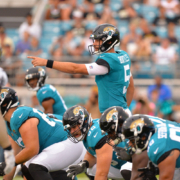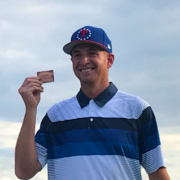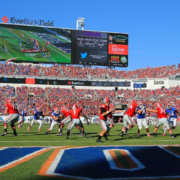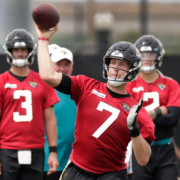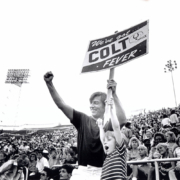When A Team Is A Team
One thing I like about this Jaguars team is it’s honest. That might sound like a strange thing to say about a team but after walking into locker rooms for over 40 years, you can tell when they’re feeding you a line.
Most of Jack Del Rio’s teams were full of it. Gus Bradley’s teams were honest, knowing they weren’t very good. Doug Marrone’s teams have been a little bit of both.
In 2017 they were straight up, giving real answers and backing them up with solid play. Last year’s Jaguars used the same words but you could tell they were hollow. Calais Campbell knew it from the start. That’s one of the reasons he held two “players only “ meetings in the first four weeks of the season, even though they were 4-1.
So when Campbell says, “this team could be special” I believe him. He knows they have some talent on the 53-man roster and the addition of Josh Allen makes the defense better in every aspect. But when Campbell talks about “communication” he’s actually giving us a peek into the team chemistry, especially in the locker room.
You can get a hint of what’s going on with a team noticing how they interact with each other off the field. Little things like how they walk off the practice field, how long they hang around the locker room together. What kinds of conversations are happening when they’re not talking about football?
This all might seem silly, but Head Coach Doug Marrone talks about it at the beginning of every year when he says, “We’re a team in name only. We’ll see what kind of team we become.”
When he was a head coach, Tom Coughlin said no team becomes successful without “an intense affection for one another.”
Some of the “honesty” from a team comes from the quarterback. Mark Brunell gave canned responses and kept the media at arms length on the successful Jaguars teams of the ‘90’s. But he could because Tony Boselli was the emotional leader on those teams. Blake Bortles was honest about his shortcomings and was respected for his toughness by his teammates. That worked in 2017 with complimentary parts around him. It didn’t last year when things started going south.
Nick Foles is an earnest and honest guy who always puts a positive spin on things. A lot of what he’s said since joining the Jaguars has sounded like platitudes from a guy tying to fit in.
Until this week.
Foles took the field last week for the first time in a Jaguars uniform. He said it was an emotional experience but then gave some insights to this team between the lines of his answers.
“You can tell when you step in the huddle what it’s going to be like and tonight was a step in the right direction,” he said after playing in Miami. “Just the feeling in the huddle.”
If you’ve ever been in a huddle and especially if you’ve ever been the quarterback in that huddle, you know exactly what he’s talking about. It’s almost intangible, but the confidence each player has in themselves and in the other guys around them is evident at that moment.
“I’ve stepped in a lot of huddles and just the energy was really positive in the huddle,” Foles added. “A lot of that comes from the O-line. Guys are growing closer and closer together every single day.”
This year’s training camp was designed to foster those relationships. Foles said the schedule gave the players more time off the field to talk, study and just be together. “I’m not just talking to the offense,” he said early in camp.
Cutting players is no fun for Doug Marrone and he was honest when he started the week saying that. But there’s enough talent among the 90 players who have been in camp for the Jaguars that some players released will end up on other rosters.
“It’s difficult,” he said. “The ones that are easy and are the ones that are guys that are a**holes that are not going to make it anyway. You cut them with a smile on your face. You can’t get them out of the building fast enough, but we don’t have that. We have guys that are truly working their butts off.”
The talent level in the NFL is close, top to bottom. It’s the teams that gel, stay healthy, have confidence in each other and make plays that get to the post season. If it were only all about blocking and tackling and game plans, everybody would be 8-8.
So you probably tuned Foles out when he said the following after the Miami game, although he revealed the secret to his ability to come off the bench in Philadelphia and win the Super Bowl.
“The things I focus on when I play the game are trust, love and carrying for the guys around me. All of those things can overcome anything. Execution comes when there’s like an energy when you trust the guy next to you.”
Some of you are rolling your eyes and talking about “Kum-by-ya” about now saying ‘Come on” and asking if they can hit somebody. But f you’ve ever been on any kind of team, you’ll understand the rest.
“There’s a special energy when you run a play. I was on the sideline, I was in the huddle, this thing is building. It’s about those relationships. It’s about caring for one another and the locker room is full of that right now. That’s something special. That’s something that’s built over time. We’ve been building since OTA’s and it was good to see tonight.”

